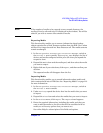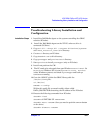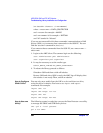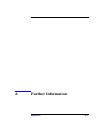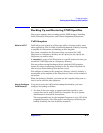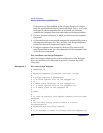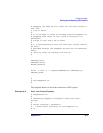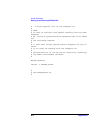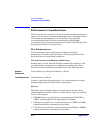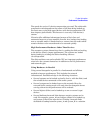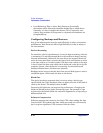
Further Information
Backing Up and Restoring UNIX Specifics
Appendix A A-3
Backing Up and Restoring UNIX Specifics
This section explains how to backup specific UNIX formats, including
VxFS, Enterprise Filesystems, and Context Dependent Filesystems.
VxFS Snapshot
What Is VxFS? VxFS allows you to back up a filesystem while it is being used by some
other application. This is called an online backup and is done by creating
a snapshot of a filesystem and backing up this snapshot.
You create a snapshot of a filesystem when you mount the VxFS
filesystem to a temporary directory. At this point you also specify the
filesystem you want to snap.
A snapshot is a copy of the filesystem at a specific moment in time you
mount the VxFS filesystem to a temporary directory.
You can perform normal backups without using the VxFS snapshot
feature by simply configuring a backup as for any other filesystem. In
this case you cannot back up files that are in use.
You configure a backup of this temporary directory, which is actually a
mountpoint to the snapshot of the filesystem as it was at the moment of
the mount.
When the backup is finished, you unmount the snapshot filesystem so
that it can be used for other purposes.
How to Configure
VxFS Backup?
If you want to use the VxFS online backup functionality, you must
configure the backup as follows:
1. You have to have an empty or unused partition created on your
system that can be used by VxFS for a snapshot. See your system
administrator’s manual for instructions.
The recommended size for the snapshot filesystem is up to 15% of the
snapped filesystem, if the filesystem is used heavily use during the
backup. Normally, the size should be around 5%.



